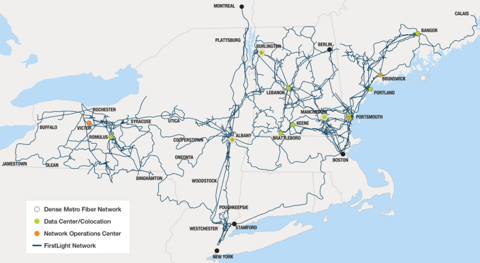Now that it has completed the integration of Finger Lakes Technologies Group (FLTG) into its fold, FirstLight has made the New York regional fiber provider another component of its broader organization.
The brand change follows FirstLight’s acquisition of FLTG in September.
Like earlier acquisitions FirstLight has made of other regional fiber providers in recent years, a key element of the FLTG acquisition is to enhance its fiber network reach for business customers in New York.
RELATED: FirstLight acquires Finger Lakes Technologies, expands New York, Pennsylvania fiber reach

“The integration of FLTG is an important development and sets the stage for FirstLight’s continued growth in 2018,” said Kurt Van Wagenen, president and CEO of FirstLight, in a release. “Now as one team and one company, we are well positioned to continue serving the fiber-based infrastructure needs of carriers and enterprise businesses throughout our growing footprint in the Northeast.”
FirstLight’s rebranding of FLTG caps off what has been a busy year of acquisition and integration for the provider. The rebrand of FLTG to FirstLight follows the rebranding of Oxford Networks, Sovernet Communications, BayRing Communications, ION Communications and 186 Communications under the FirstLight brand.
With FLTG under its belt, FirstLight now operates about 14,000 route miles of fiber connecting nearly 8,000 locations and 12 data centers in six states.

Albeit at a smaller scale, FirstLight’s appetite to acquire regional fiber providers illustrates the growing importance of business-grade and wholesale fiber to competitive and incumbent providers alike, who either buy, lease or build out fiber themselves.
FirstLight has used acquisitions like FLTG and others to complement its own ongoing network build in the Northeast market, where it is attempting to differentiate itself from traditional telcos like Verizon and an aggressive Comcast Business, which has been actively expanding its fiber network in key markets.
The equation for competitive providers is simple: The more fiber they own, the more valuable they can be to large multisite businesses as well as finding wholesale opportunities with wireless and content providers.
